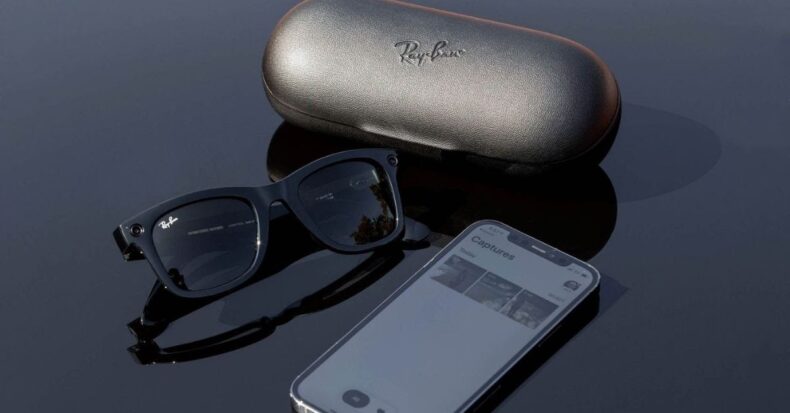A newly launched first-generation smart glasses made in partnership with Ray-Ban and Facebook.
Available in three frame styles, the Wayfarer style and round of Ray-Ban Stories also consists of different colours, including clear.
The idea of camera sunglasses may seem familiar because it sounds like Snapchat Spectacles, launched in 2016.
The whole point of the Ray-Ban collaboration of Facebook is to make these tech glasses look like ordinary and extraordinary glasses, unlike Google Glass or the flashy bright yellow Snapchat Spectacles.
The frame design of this sleek Wayfarer consists of two small black camera lenses in the corners of the frames that blend in perfectly until and unless you’re looking up close.
It will look like regular sunnies to most people. The video and photos are stored locally on your phone.
HOW DO THESE SUNGLASSES WORK?
The photos and videos look excellent, considering they’re taken from camera glasses. They have a 5-megapixel camera and some onboard processing that does a lot to sharpen and clean up the images.
The glasses can shot decent photos in lower light, and image stabilization is solid enough to prevent the video from looking too shaky.
There are some essential tools in the View app that can combine multiple videos into montages because it only records videos for up to 30 seconds.
One of the great features of this device or accessory is that it has speakers in the arms of the glasses, which is activated by touch and are easy to use.
Because it’s not an in-ear speaker, you can hear some outside noise, it is excellent for walking around when you want to be slightly aware of your surroundings, and it’s probably also great for outdoor activities.
To let people nearby know when they are being photographed, a hard-wired capture LED lights up as a signal.
A little bigger than an average sunglasses case, the glasses are charged in its case.
They can last for about 6 hours. The glasses are barely heavier than a traditional pair of Wayfarers; it is way more comfortable than it looks.
THE COLLABORATION.
Rocco Basilico, the chief wearable officer of Luxottica cold, emailed Facebook’s CEO Mark Zuckerberg for a meeting and discussed collaborating on smart glasses; that’s how the two organizations first connected approximately a couple of years ago.
Zuckerberg had publicly laid out Facebook’s aspiration to produce AR glasses that could one day be as widely adopted as mobile phones. Basilico was overseeing Luxottica’s smart glasses endeavours at the time and felt the need to partner with a tech company to manufacture them.
In 2019, Zuckerberg flew to Milan to seal the deal with Luxottica’s founder and chairman Leonardo Del Vecchio.
These two consented to the main prepositions of the product.
During a weeklong workshop with top executives from both companies, all the necessary features of the glasses were decided when hardware executives from Facebook travelled to tour Luxottica’s sprawling research centre in northern Italy.
DESIGNED WITH PRIVACY IN MIND.
Even without AR functionality, there are still clear privacy concerns associated with a Facebook device that can record whatever you’re looking at.
Perhaps attempting to pre-empt a backlash, Facebook has developed a dedicated privacy policy for the new technology.
The main privacy issue isn’t protecting yourself from unwanted ads but protecting other people from being secretly recorded.
The glasses feature a small light on the side of the frame, which is illuminated when recording, so people will be aware that they are being recorded.
But with the help of some tape and marker, it can easily be covered over. While this would violate Facebook’s terms of service, the real question is how Facebook would realistically stop anyone from doing it.













